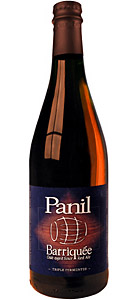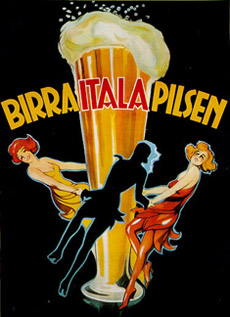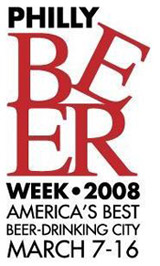When Stephen Beaumont commented yesterday that “the Italians are currently at a crossroads between innovation and expertise” I don’t think he was talking about quality control. It’s something to consider, though, given that most of these breweries haven’t been around 10 years, so they are focused on figuring out flavors rather than packaging.
 I stand by New Beer Rule #4: The god of beer is not consistency. But there’s variation and there’s variation, and Panil Barriquée proved that to me in 2007. It was one the very best beers I had all year, and one of the worst.
I stand by New Beer Rule #4: The god of beer is not consistency. But there’s variation and there’s variation, and Panil Barriquée proved that to me in 2007. It was one the very best beers I had all year, and one of the worst.
The first Barriquée of the year was simply disappointing. I picked up a bottle last April for Sunday dinner. It takes something of an occasion to spring for a $17 bottle of beer, but it has been that good in the past. This 2006 bottle poured nearly flat, and I since learned that almost all bottles from the vintage were under-carbonated. Some more (or would that be less?) than others. The flavors were there, but the beer tasted like they hadn’t been introduced to each other.
The difference was apparent in August when I had a 2007 bottle (with Batch #8 right on the label). The aromas and flavors seemed to jump out of the glass. Maybe it was the contrast to the 2006, but the energy in this beer was stunning.
It’s one of the beers I was sent for All About Beer magazine’s Beer Talk. Part of what I wrote: “Lushly textured with tightly woven flavors – oak, cherries, vanilla and brown sugar – balanced by rich vinegar notes. As it warms soft malt character moves to the background, giving way to a tasty sourness.”
That doesn’t happen if there isn’t life in the bottle.
In November I saw the 2006 vintage again. It was at a homebrew club meeting and the topic of the month was “sour ales.” A member rounded up a bunch of beers and we sampled them, after a show of hands indicating less than half those in the room had sampled intentionally sour beers. Most weren’t ready for Cantillon Iris, but that’s a separate story.
I wasn’t even going to try the Barriquée, but was curious because it turned out it came from a store that doesn’t necessarily care for beer that well. I wondered what six months of warm storage might have done for it or to it. Nope. Now it was flat and unpleasantly sour. Like the vinegar we used to make from beer. Certainly not what the brewer intended.
I looked around the room. A lot of puckering, and plenty of confusion about the difference between “good sour” and “bad sour.” I certainly wish we’d had a bottle of Batch #08 to show them what it should have tasted like.
 The Italians are coming. The Italians are coming.
The Italians are coming. The Italians are coming. – I’ve tried not to spend too much time looking at the
– I’ve tried not to spend too much time looking at the  Note: This is my contribution to The Session #12: Barleywine, hosted by
Note: This is my contribution to The Session #12: Barleywine, hosted by  A tableau that returned to my mind last spring when I read Michael Jackson’s working introduction to
A tableau that returned to my mind last spring when I read Michael Jackson’s working introduction to